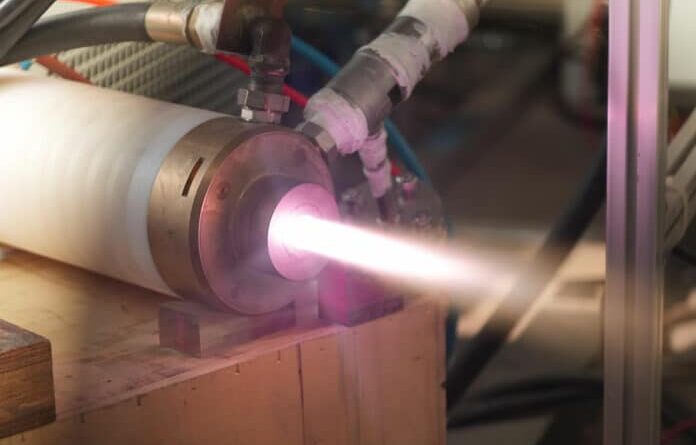The Power and Precision of Plasma Torches: A Deep Dive
In the world of cutting, welding, and surface treatment, few tools offer the sheer power and versatility of plasma torches. These remarkable devices harness the energy of ionized gas, or plasma, to generate extremely high temperatures, enabling them to cut through even the toughest materials with remarkable precision. From heavy-duty industrial applications to intricate artistic creations, plasma torches have become indispensable tools across a wide range of industries.
A plasma torch operates on the principle of using an electric arc to heat a gas, typically air, nitrogen, or argon, to extremely high temperatures. This superheated gas becomes ionized, meaning its atoms lose electrons, creating a plasma state. This plasma is then forced through a constricted nozzle at high velocity, forming a concentrated and intensely hot jet. This jet is capable of melting and vaporizing the material it comes into contact with, allowing for clean and precise cuts.
How Plasma Torches Work: A Closer Look
The process begins with a power source that provides the necessary electrical energy. This energy is used to create an arc between an electrode (typically made of tungsten) and the workpiece. A gas, known as the plasma gas, is introduced into the torch. The intense heat of the arc ionizes this gas, creating the plasma. A separate gas, called the shielding gas, may also be used to protect the molten metal from oxidation and to improve the cut quality. The high-pressure plasma jet is then directed towards the workpiece, where it performs the cutting, welding, or surface treatment operation.
The temperature of the plasma jet can reach incredibly high levels, often exceeding 20,000°C (36,000°F). This extreme heat allows plasma torches to cut through a wide variety of electrically conductive materials, including steel, stainless steel, aluminum, copper, and even some alloys that are difficult to cut with other methods.
Applications of Plasma Torches
The versatility of plasma torches makes them valuable tools in numerous industries:
- Manufacturing: Plasma cutting is widely used in manufacturing for cutting sheet metal, plate, and structural shapes. It is faster and more efficient than traditional cutting methods for many materials.
- Construction: Plasma torches are used in construction for cutting pipes, beams, and other metal components on site.
- Automotive: The automotive industry uses plasma cutting for fabricating parts, repairing vehicles, and dismantling scrap cars.
- Shipbuilding: Plasma cutting is essential in shipbuilding for cutting large plates of steel and other metals.
- Aerospace: The aerospace industry utilizes plasma cutting for manufacturing complex parts from high-strength alloys.
- Salvage and Demolition: Plasma torches are used in salvage and demolition operations to cut through metal structures quickly and efficiently.
- Art and Design: Artists and designers use plasma cutting to create intricate metal sculptures and other works of art.
Advantages of Using Plasma Torches
Plasma torches offer several significant advantages over other cutting methods:
- High Cutting Speed: Plasma cutting is generally much faster than traditional cutting methods, especially for thicker materials.
- Clean Cuts: Plasma torches produce clean and precise cuts with minimal dross (slag) formation.
- Versatility: Plasma torches can cut a wide range of electrically conductive materials.
- Ease of Use: Modern plasma cutting systems are relatively easy to operate, even for those with limited experience.
- Portability: Many plasma cutting systems are portable, making them suitable for on-site work.
- Cost-Effectiveness: While the initial investment may be higher, the speed and efficiency of plasma cutting can lead to significant cost savings in the long run.
Types of Plasma Torches
Plasma torches are available in various types, each designed for specific applications:
- Handheld Plasma Torches: These are portable and easy to use, ideal for smaller jobs and DIY projects.
- Automated Plasma Cutting Systems: These systems are integrated with CNC machines for high-precision and high-volume cutting.
- Air Plasma Torches: These torches use compressed air as the plasma gas, making them more economical for many applications.
- Inert Gas Plasma Torches: These torches use inert gases like argon or nitrogen, providing cleaner cuts and better control for certain materials.
Safety Considerations
Working with plasma torches involves certain safety risks due to the high temperatures and intense arc. Proper safety precautions must always be followed:
- Eye Protection: Specialized welding helmets with appropriate filters are essential to protect the eyes from the intense light of the plasma arc.
- Hearing Protection: The plasma cutting process can be noisy, so hearing protection is recommended.
- Protective Clothing: Wear flame-resistant clothing to protect the skin from sparks and heat.
- Ventilation: Ensure adequate ventilation to avoid inhaling fumes generated during the cutting process.
Conclusion
Plasma torches represent a powerful and versatile tool for a wide range of cutting, welding, and surface treatment applications. Their ability to generate extremely high temperatures and produce clean, precise cuts makes them indispensable in numerous industries. From manufacturing to art, plasma torches continue to revolutionize the way we work with metal and other conductive materials. As technology advances, we can expect even more innovative applications and improvements in the performance and efficiency of plasma torches in the future.




